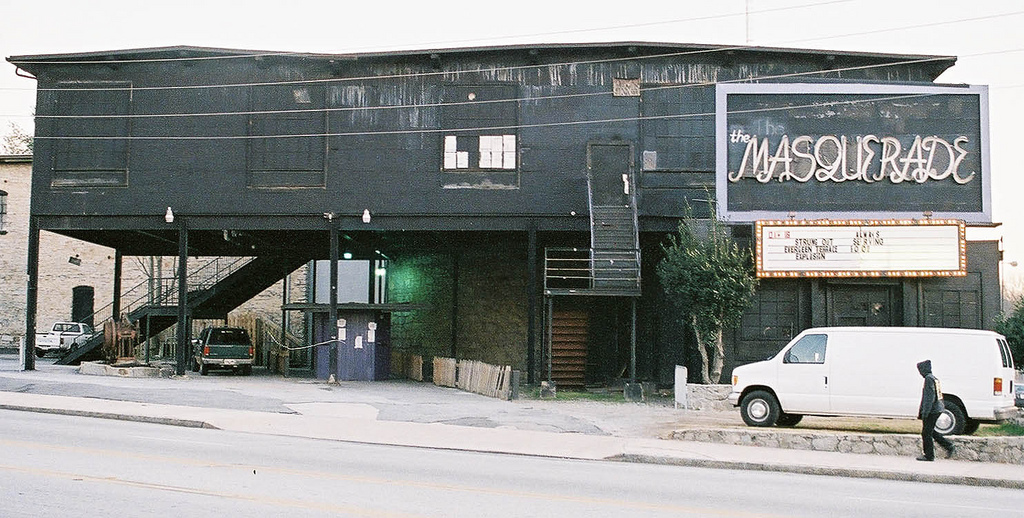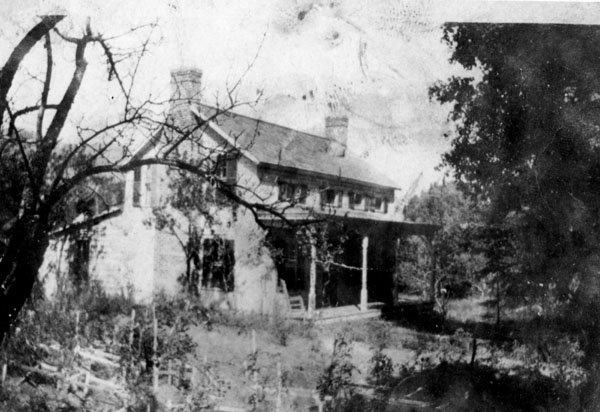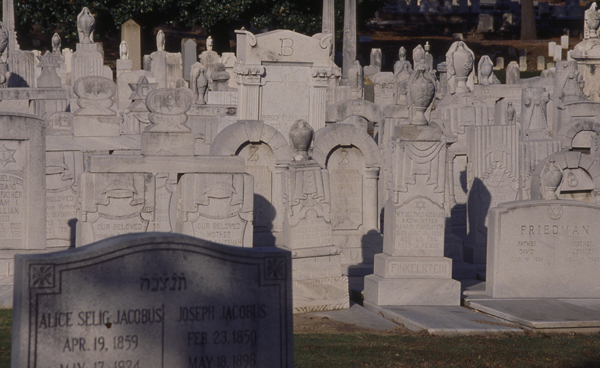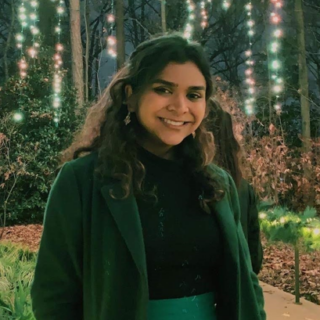With October upon us, it’s a great time to highlight ghosts! After all, they are the Atlanta residents who have been around longer than most. Tales of mystery surrounding both Atlanta’s better-known and lesser-known haunts can tell us much about the living – or more fittingly, the undead – history of the city. The next time you’re driving or walking the city streets, be aware that some of that history may be looking back.

Elijahlight, Wikimedia Commons
DuPre Excelsior Mill | 695 North Avenue
The first stop on our virtual ghost tour is the DuPre Excelsior Mill in Old Fourth Ward. The complex was built in the 1890s by the DuPre Managing Company to produce excelsior, or “wood wool,” which was used in packaging before the invention of foam rubber. While the DuPre was in operation as a functioning mill, it was the site of a fire as well as tuberculosis outbreaks. Workers who fell victim to sickness or flames at the DuPre were said to haunt the location. In 1989, the mill became the Masquerade, the iconic music venue where bands, such as Nirvana, Smashing Pumpkins, and Radiohead, played.
Masquerade staff members said the venue featured a lot of unexplained phenomenon, including cold spots, loud footsteps, and overturned electric equipment.
The Masquerade left the spirits behind in 2016 when it relocated to the Heaven, Hell, and Purgatory venues of Kenny’s Alley in Underground Atlanta. Recently, the mill was converted into a mixed-used space of apartments and offices. While renovations were being made in 2019, the eastern wall of the mill collapsed, which might have been the ghosts’ way of saying that they missed the music or were still trying to escape the horrors from all those years ago.
Cotten Alston, Cotten Alston photographs, Kenan Research Center, Atlanta History Center
Fox Theatre | 660 Peachtree Street NE
In similar showbiz spirit, the dazzling Fox Theatre is said to be haunted as well. The Fox may be the setting for comedies, musicals, and plays, but there are other spirits that keep shows going even when the curtain is closed. Each night, the stage is lit by a “ghost light.” The single bulb at the end of the stage exists to keep people from falling off the stage into the orchestra pit, but gets its moniker from the fact that it also appeases the ghosts who use the stage after hours. Paranormal activity at the Fox is also said to go on in spaces not available to audience eyes. When alone in the underbelly of the stage, workers have said they’ve heard clanging chains and seen heavy metal doors open by themselves. The Fox is also technically a burial ground – renowned former Fox organist Bob Van Camp’s ashes lie in an urn in the house organ.
Jack Young, Marion Johnson Photographs, Kenan Research Center, Atlanta History Center
Winecoff Hotel | 176 Peachtree Street NW
Just down the street from the Fox lies the Ellis Hotel, another Atlanta historical staple with beautiful architecture, but an even more notably grisly past. The Ellis opened in 1913 as the Winecoff Hotel and despite being advertised as “absolutely fireproof” upon construction, it was the site of a terrible fire on December 7, 1946. More than 100 people perished in what is still the deadliest hotel fire in U.S. history. After multiple renovations and name changes throughout the years, the Winecoff became the Ellis in 2007. Despite the rebranding, the horrible events of that evening should never be forgotten. Current occupants of the hotel’s rooms are occasionally reminded of the fire’s terror. The fire alarm sometimes goes off at 2:48 a.m., the time the deadly blaze began in 1946. Visitors and workers alike have reported hearing screams and smelling smoke. In addition, passersby have claimed to see faces that are not only frozen in terror in the windows of the hotel, but also still crying for help after all these years.

Atlanta History Photograph Collection, Kenan Research Center, Atlanta History Center
Montgomery-DeFoor House | Intersection of Moores Mill Road NW and Bolton Road NW
Moving from haunted hotels to haunted houses, next up is the Montgomery-DeFoor House. The house was one of the oldest in Dekalb County at the time of a terrible and unexplained murder. On July 26, 1879, Martin DeFoor and his wife Susan were brutally slaughtered with an ax while they lay in their beds. They were nearly decapitated from the ax blows. The ax used in the killings was left in the fireplace, where it was covered in ash and blood. No clear motive was ever discovered, since the house was not robbed, and according to the DeFoor’s grandson, the couple “had not a known enemy in the world.” While a perpetrator was never apprehended, eerie evidence pointed to a unknown drifter.
An attic rarely used by the family had clear evidence of being lived in, with an unmade bed, fresh crumbs on the floor, and muddy footprints on the floor and windowsill.
This suggested that the killer had slept in the house for at least a night – before or after the murders. Given the age of the case, it will forever remain unsolved. The house stood at the intersection of DeFoors Ferry and Moores Mill Roads and was torn down in August 1879 shortly after the murders. With its Hitchcockian look, the house surely would’ve served as a legendary haunted house, especially given its grisly history.

Cotten Alston, Cotten Alston photographs, Kenan Research Center, Atlanta History Center
Oakland Cemetery | 248 Oakland Avenue
No ghost tour is complete without a mention of a cemetery, and Atlanta’s Oakland Cemetery is a surefire bet for paranormal activity. It is the city’s oldest public park and one of the largest green spaces in the U.S. More than 70,000 people are buried in Oakland Cemetery, and approximately 6,900 of them are Confederate soldiers. It has been said that the ghosts can still be heard answering roll call, restless in their final resting place. It is also the burial place for some famous Atlantans, including Mayor Maynard Jackson, musician Kenny Rogers, golfer Bobby Jones, author Margaret Mitchell, and African American social activists Selena Sloan Butler and Carrie Steele Logan. The cemetery offers nighttime tours throughout October to educate visitors about the cemetery’s grounds, history, and perhaps give a glimpse of a ghost or two.

